Oak flooring has long been a popular choice among homeowners and interior designers due to its durability, timeless beauty, and the warm, natural ambiance it adds to any room. However, like any flooring option, oak comes with its own set of advantages and disadvantages.
In this comprehensive guide, we’ll explore the pros and cons of oak flooring, helping you make an informed decision on whether it’s the right choice for your home or project. From its aesthetic appeal to considerations around cost and maintenance, understanding these key factors will ensure that your investment in oak flooring meets both your practical needs and stylistic preferences.
Pros of Oak Flooring
Durability & Strength
Oak’s reputation for toughness and lasting durability stands as one of its most appealing attributes when it comes to flooring options. Classified with a high hardness rating on the Janka scale, oak is equipped to handle the rigors of daily life, including high foot traffic areas in homes or commercial spaces.
This resilience not only contributes to its longevity but also provides a level of assurance that your flooring will maintain its integrity and appearance for many years to come.
Its natural resistance to scratches and dents means oak flooring is a practical choice for families, pets, and spaces where durability is of utmost importance.
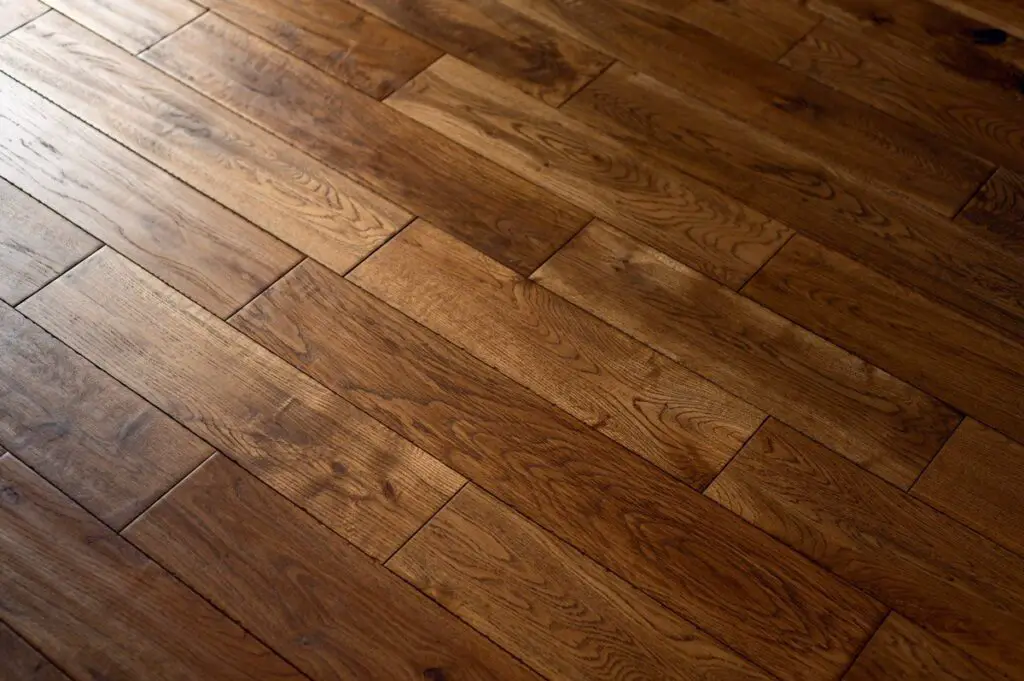
Investing in oak flooring is hence not just an aesthetic decision but a practical one, ensuring that your spaces not only look timeless but also endure the test of time.
Aesthetic Appeal
The aesthetic appeal of oak flooring is unparalleled, making it a favored option for adding warmth and natural elegance to any space. Oak’s distinct grain patterns bring a sense of depth and character to rooms, setting a foundation that is both inviting and versatile.
Each plank tells a unique story through its grain, with patterns that can range from subtle and straightforward to intricate and richly textured.
This variability ensures that no two oak floors are exactly alike, offering a personalized touch to your home or project.
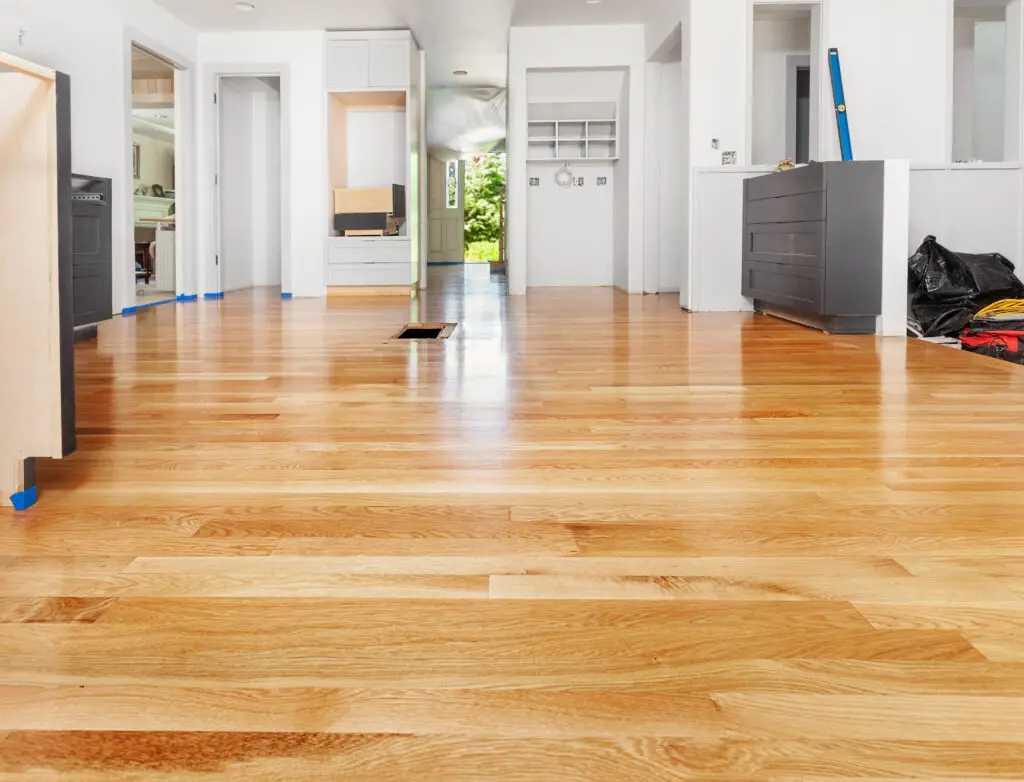
Furthermore, oak flooring is available in a wide array of colors and finishes, from light, natural hues that brighten a space and create an airy feel, to darker tones that lend sophistication and a sense of intimacy.
The versatility of oak allows it to seamlessly complement a diverse range of interior designs, from rustic and traditional to modern and minimalist styles.
The finish applied, whether oil-based for a more natural look or polyurethane for added protection and shine, can further enhance the floor’s appearance and feel, catering to various aesthetic preferences and lifestyle needs.
This breadth of options ensures that oak flooring can be tailored to match the unique ambiance you wish to achieve, making it a truly adaptable flooring solution.
Increases Property Value
Homes equipped with oak flooring often see an uptick in their market value, a testament to the desirability and enduring nature of this material. Oak’s longevity and timeless elegance play a significant role in this valuation.
Real estate professionals and prospective homebuyers alike recognize the inherent value of oak, knowing that its presence suggests a home that is not only aesthetically appealing but also built to last. This perception can significantly affect the resale value of properties, making oak flooring a wise investment.
Furthermore, oak’s universal appeal and ability to complement various interior designs mean it rarely goes out of style, ensuring that homes with oak floors remain in high demand year after year.
This enduring appeal contributes to the overall financial benefit of choosing oak for flooring purposes, making it a preferred choice for enhancing property value.
Versatility
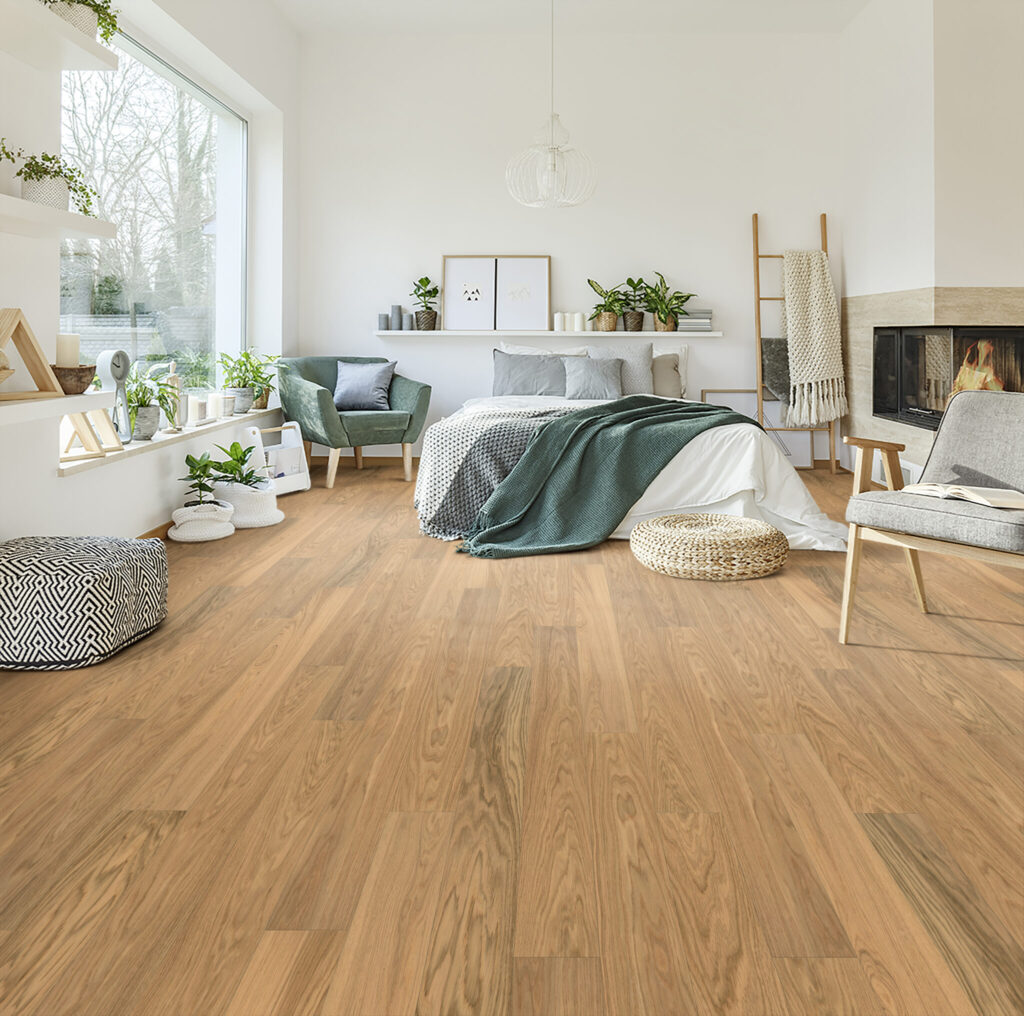
The true beauty of oak flooring lies in its unparalleled versatility, allowing it to harmonize with both traditional and contemporary design schemes. In traditional settings, oak’s natural grain and warmth lend an air of timelessness and comfort, evoking a sense of heritage and nostalgia.
This makes it the perfect foundation for classic furnishings, antique decor, and rich, textured fabrics, contributing to an atmosphere that feels both elegant and inviting.
Conversely, in contemporary interiors, oak’s clean lines and natural textures provide a neutral yet striking base that complements modern aesthetics. Its ability to adapt to various finishes and stains means it can easily align with minimalist designs, bold architectural elements, and innovative decor.
The capacity of oak flooring to transcend design trends ensures that it enhances the space’s overall look and feel, regardless of the preferred style theme, making it a versatile choice for any home.
Easy Maintenance
One of the most compelling advantages of oak flooring is its ease of maintenance, which ensures its longevity and persistent aesthetic appeal. Unlike carpet, which can harbor dirt, allergens, and stains, or tile, which may require regular grout cleaning, oak floors are relatively straightforward to care for.
Regular sweeping or vacuuming is usually sufficient to remove everyday dust and debris, while a damp mop can address spills and sticky spots without risking damage to the wood.
For deeper cleaning, specialized wood floor cleaners can restore the oak’s natural shine without the harsh chemicals that might strip or damage the finish.
Importantly, oak’s durability means it’s less prone to scratches and dents from daily wear and tear, but any minor imperfections that do arise can often add to its character.
With occasional sanding and refinishing, oak floors can look as good as new, even decades after installation, making them an exceptionally cost-effective and low-maintenance flooring option.
Cons of Oak Flooring
Cost: Initial Investment

While oak flooring offers numerous benefits, one of the primary considerations for homeowners is its cost. The initial investment in oak flooring is higher compared to many other flooring options such as laminate, carpet, or vinyl.
This higher cost is due to the quality and durability of the material, as well as the craftsmanship involved in its installation. Oak, being a hardwood, requires more complex processing and finishing techniques than softer wood types or synthetic materials.
Furthermore, the aesthetic appeal and long lifespan of oak contribute to its premium pricing. Homeowners need to view this cost not just as an expense, but as a long-term investment in their property.
Oak flooring can significantly increase a home’s value, offer unparalleled longevity, and reduce the need for frequent replacements or repairs. Therefore, while the upfront cost may be substantial, the enduring quality and timeless beauty of oak flooring often justify the investment.
Susceptibility to Moisture and Humidity
Like all wood flooring, oak can warp or swell in highly humid or wet conditions. The natural fibers in the wood absorb moisture, which can lead to changes in its dimensions, potentially causing the boards to expand, warp, or even rot over time if left unchecked.
This is particularly true in environments where moisture levels are not consistently controlled, such as basements, bathrooms, or kitchens.
To mitigate this risk, it’s crucial to maintain stable humidity levels within the home, which can often involve the use of dehumidifiers or air conditioners. Additionally, installing a moisture barrier during the oak flooring installation process can provide an extra layer of protection against moisture penetration.
Care should also be taken to clean up any spills promptly to prevent water from seeping between the boards.
Fading Under Sunlight
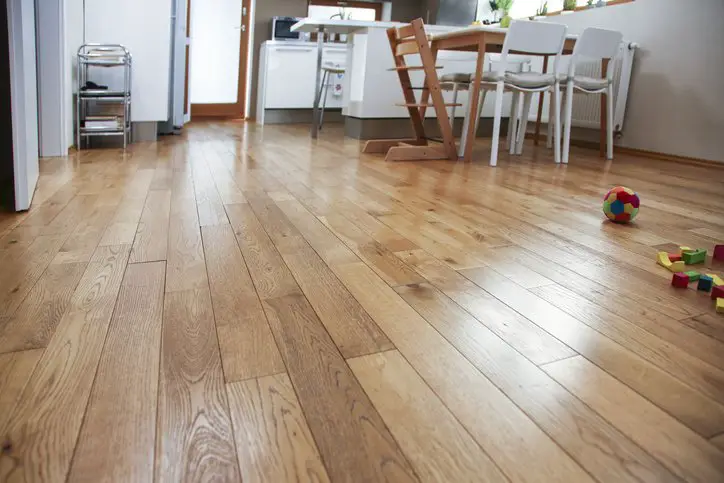
Prolonged exposure to sunlight can lead to the fading of oak flooring’s color, a common issue for many homeowners who cherish the natural hue of their wooden floors.
Sunlight emits ultraviolet (UV) rays, which can break down the chemical bonds in the floor’s finish and even in the wood itself, leading to a noticeable lightening or change in shade over time.
This effect is particularly evident in areas of a room that receive direct sunlight through windows. To combat this, homeowners can apply UV-blocking window films, utilize blinds or curtains during peak sunlight hours, or strategically place rugs in sunlit areas.
Regularly rearranging furniture and rugs can also help in evenly distributing the fading process, ensuring a more uniform coloration across the flooring.
Scratches and Wear
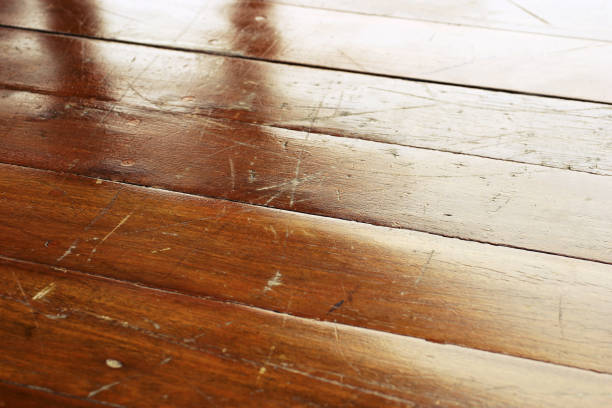
Although oak flooring is celebrated for its durability and longevity, it is not impervious to the everyday wear and tear that comes with regular use. Scratches, dents, and general wear can occur from a variety of sources, including pets, furniture movement, and footwear such as high heels.
Pets, particularly those with long nails, can leave behind noticeable scratches as they move or play on the flooring. Furniture, when dragged or inadequately protected with felt pads underneath legs, can cause significant dents and scratches.
High heels, especially stiletto heels, exert a tremendous amount of pressure on small points, making them capable of piercing the protective finish of the oak and creating deep indentations.
To mitigate these issues, it’s advisable to regularly trim pet nails, use protective pads under furniture legs, enforce a no-shoes policy, and place mats or rugs in high-traffic areas.
Additionally, refinishing the floor periodically can help repair superficial damage and restore the floor’s original beauty.
Installation Complexities
The installation of oak flooring presents its own set of challenges and complexities, often making it a task best suited for professionals. Unlike some other flooring options that might offer simple, do-it-yourself installation kits, oak flooring demands a more meticulous and precise approach.
This primarily stems from the need to properly acclimate the wood to the indoor environment before installation, a process that can take several days to ensure the wood’s moisture content is in balance with its new surroundings to prevent warping or cracking.
Additionally, the hardness of oak requires specialized tools for cutting and fitting each plank precisely.
The subfloor preparation also plays a critical role in the successful installation of oak flooring; it must be clean, level, and dry to avoid future issues such as squeaking or unevenness.
Installing underlayment for moisture protection adds another layer of complexity to the process.
Related Topics:
Conclusion
So, oak flooring stands as a testament to both beauty and resilience, marking it as a highly sought-after choice for homeowners and interior designers. The pros of oak flooring, such as its durability, aesthetic appeal, and the added value it brings to properties, clearly demonstrate its allure.
Oak’s versatility and ease of maintenance further establish it as a superior flooring option that can seamlessly integrate into a plethora of design schemes while standing up to the demands of daily life.
However, it’s essential to weigh these benefits against the cons, including the initial cost, sensitivity to moisture and humidity, potential fading under sunlight, susceptibility to scratches and wear, and the complexities involved in its installation.
Acknowledging these factors is crucial for making an informed decision that aligns with your long-term needs and aesthetic desires.
Choosing oak flooring is more than just selecting a flooring material; it’s an investment in your home’s future, promising a blend of timeless elegance and enduring strength. If the initial investment and maintenance considerations align with your budget and lifestyle.
FAQs
How long does oak flooring typically last?
With proper care and maintenance, oak flooring can last upwards of a century. Its durability is one of the key reasons it’s such a popular choice among homeowners.
Can oak flooring be installed in high-moisture areas?
While oak is more resistant to moisture than some other types of wood, it’s not the best choice for high-moisture areas like bathrooms or basements without proper sealing and moisture barriers.
Is it possible to refinish oak flooring?
Yes, one of the significant advantages of oak flooring is its ability to be sanded down and refinished, potentially giving it a new life and look. This process can usually be done multiple times over the life of the flooring.
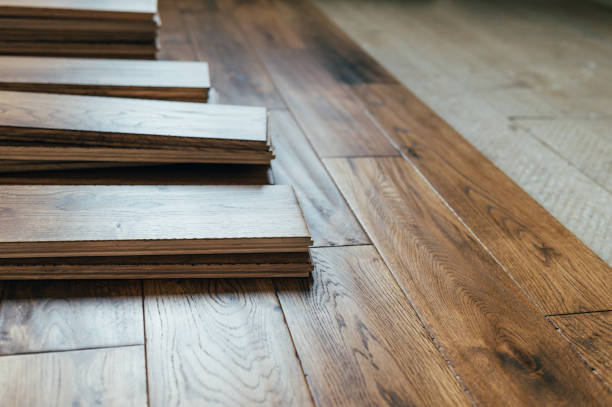
5 thoughts on “Exploring The Pros And Cons Of Oak Flooring”